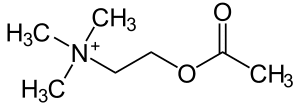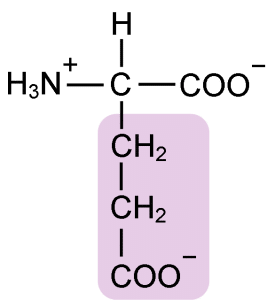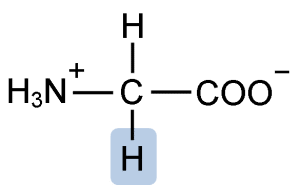Neurotransmitters are endogenous chemicals that enable communication within the nervous system and between the nervous system and the rest of the body. They relay information between individual neurons, and ultimately regulate a wide range of bodily functions.
There are various classes of neurotransmitters, with different functions and mechanisms of action. Neurotransmitter levels and function are crucial to maintaining homeostasis, and if altered can lead to diseases. Here we will discuss their mechanism of action, different classes and their clinical relevance.
Mechanism of Action
Neurotransmitters transmit signals across a synapse at various locations, such as:
- From one neuron to another target neuron
- At the neuromuscular junction (NMJ), that is from a neuron to a target muscle cell
- From a neuron to a target gland.
A synapse is a junction through which a neuron relays information to another neuron; it has three main components:
- The axon terminal (pre-synaptic side), where information is transmitted from
- The synaptic cleft
- The dendrite (post-synaptic side), receiving the information
There is generally a low-level baseline level of neurotransmitter release that occurs without any need for stimulation. However, the amount released is increased in response to threshold action potentials. The binding of neurotransmitters to the post-synaptic neuron then results in either excitation or inhibition depending on which is released and the receptor it binds to.
Some neurotransmitters also have a neuromodulatory action. These can act on large numbers of neurons at once and are involved in larger-scale regulation of groups of neurons. This process takes place over a much slower time course than excitatory and inhibitory transmission.
Fig 1 – Diagram showing the basic model of neurotransmission. (A) Presynaptic neuron. (B) Postsynaptic neuron. (1) Mitochondria. (2) Synaptic vesicles containing neurotransmitters. (3) Autoreceptor. (4) Synaptic cleft. (5) Neurotransmitter receptor. (6) Calcium channel. (7) Fused vesicle releasing neurotransmitter. (8) Neurotransmitter reuptake pump.
Neurotransmitters
Classes of Neurotransmitter
There are hundreds of neurotransmitters, but they can be grouped into classes depending on their structure, or function.
Focusing on structure, neurotransmitters can be classed as:
- Monoamines – such as dopamine, noradrenaline, adrenaline, histamine, serotonin
- Amino acids – such as glutamate, GABA (gamma-aminobutyric acid), glycine, aspartate, D-serine
- Peptides – such as opioids, endorphins, somatostatin, oxytocin, vasopressin
- Other – such as acetylcholine (ACh), adenosine, nitric oxide
Often, it is more useful to classify neurotransmitters based on their function:
- Excitatory neurotransmitters increase electrical excitability on the post-synaptic side through modulation of the trans-membrane ion flow to facilitate the transmission of an action potential.
- Inhibitory neurotransmitters decrease electrical excitability on the post-synaptic side to prevent the propagation of an action potential.
- Neuromodulators function to alter the strength of transmission between neurons by affecting the amount of neurotransmitter that is produced and released
Specific Neurotransmitter Examples
Glutamate
Glutamate is typically synthesised within neurons from glutamine and is the most abundant neurotransmitter in the brain. It is an excitatory neurotransmitter and binds to four different receptors:
- NMDA receptors – an ionotropic receptor permeable to sodium, potassium, and calcium ions
- AMPA receptors – an ionotropic receptor permeable to sodium and potassium ions
- Kainate receptors – an ionotropic receptor permeable to sodium and potassium ions, these are similar to AMPA receptors but much less common
- Metabotropic G-protein coupled receptors
It is thought to have an essential role in learning and memory, particularly in the process of long-term potentiation.
Acetylcholine (ACh)
ACh is used both in the central and peripheral nervous system, in particular at the NMJ. It is synthesised in neurons from choline and acetyl-CoA. ACh is an excitatory neurotransmitter and binds to two different receptor types:
- Nicotinic ACh receptors (nAChRs) – iontropic receptors found at the NMJ, within the CNS and the sympathetic and parasympathetic nervous system. They are also found pre-synaptically in the brain and are thought to have a neuromodulatory effect
- Muscarinic ACh receptors (mAChRs) – G protein coupled receptors found in the CNS and within post-ganglionic parasympathetic neurons
Because it is present in so many different areas of the body ACh plays a role in many different processes, including stimulation of muscles at the NMJ; arousal; attention; digestion and salivation.

Fig 3 – The chemical structure of Acetylcholine.
GABA
GABA is synthesised from glutamate and is an inhibitory neurotransmitter within the CNS. It binds to two different receptors:
- GABA A receptors – ionotropic receptors permeable to chloride and bicarbonate ions
- GABA B receptors – metabotropic G protein-coupled receptors
GABA has both rapid inhibitory effects when binding to post-synaptic receptors and slower inhibition via neuromodulation at pre-synaptic receptors. It is involved in many different processes in the brain, such as regulating neuronal activity; anxiety, and sleep.
Glycine
Glycine is an amino acid that is used at the majority of inhibitory synapses in the spinal cord and brainstem. It binds to ionotropic receptors which are permeable to chloride and bicarbonate ions.
As an inhibitory neurotransmitter glycine is important in many motor and sensory functions, such as reciprocal inhibition of antagonistic muscles in spinal reflexes. Glycine also has an excitatory role within the CNS as it is a co-agonist at glutamatergic NMDA receptors.
Clinical Relevance – Benzodiazepines and GABA Transmission
Benzodiazepines are a class of drugs typically prescribed for their anxiolytic and sedative properties. Examples include; chlordiazepoxide, clonazepam, diazepam and lorazepam.
They do not act directly on receptors but instead bind allosterically to GABA receptors. This results in an increased probability of the channel opening and potentiation of GABAergic neurotransmission within the brain.
Benzodiazepines are prescribed for a variety of conditions, such as insomnia, anxiety disorders, seizures, and alcohol withdrawal. However, they can have a number of adverse effects including memory loss; increased likelihood of falls in the elderly, and nausea. They also have the potential to be addictive and so are generally only prescribed for short-term use.


